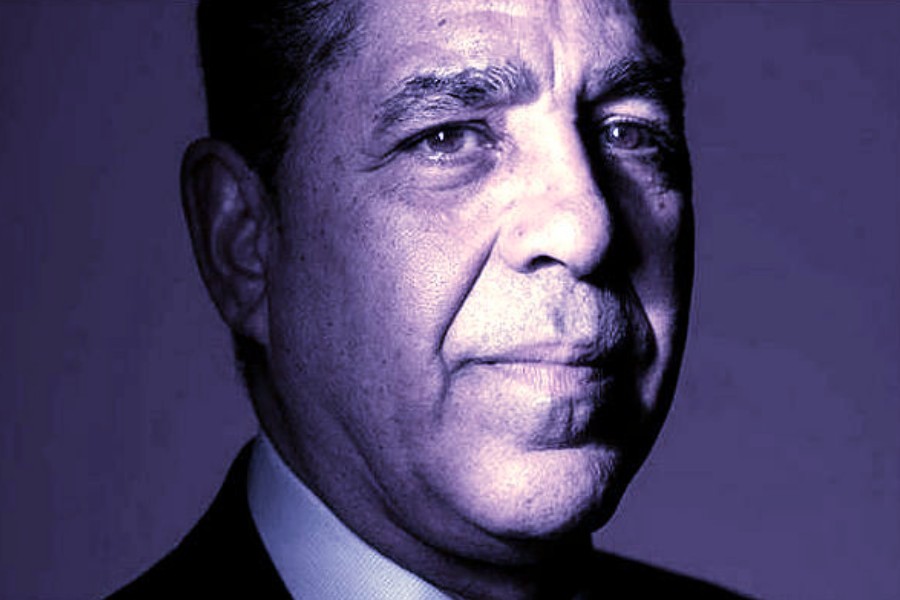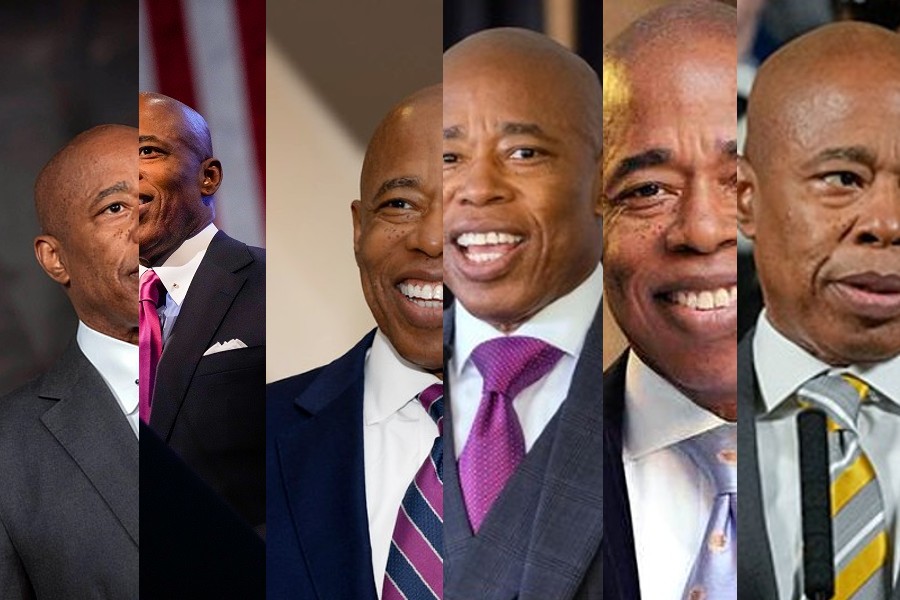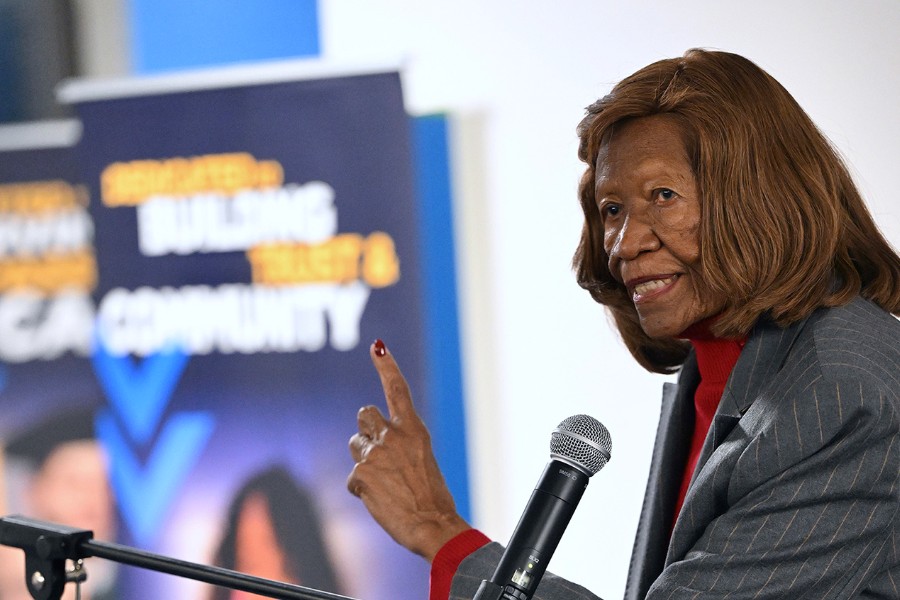
As the story is usually told, the civil rights movement began in 1955 when Rosa Parks refused to give up her seat on an Alabama bus.
In fact, the stage had been set decades before, by activists of the National Association for the Advancement of Colored People, who braved the appalling violence and oppression of the Jim Crow era. Some of their names are familiar: W.E.B. Du Bois and Thurgood Marshall. They all played prominent roles in the NAACP, the preeminent civil rights organization of the era. But Walter White — arguably the most influential Black man in mid-century America and the leader of the NAACP from 1929 to 1955 — has been all but forgotten. Forgotten Hero: Walter White and the NAACP traces the life of this neglected civil rights hero and seeks to explain his disappearance from our history. Directed by Michelle Smawley, written and produced by Rob Rapley, and executive produced by Cameo George, Forgotten Hero: Walter White and the NAACP premieres Tuesday, February 25, 2025, 9:00-11:00 p.m. ET on PBS, PBS.org and the PBS App.
With his blond hair and blue eyes, Walter White looked white; he described himself as “an enigma, a Black man occupying a white body.” Like virtually all light-skinned African Americans of his day, White was descended from enslaved Black women and powerful white men. He was Black and that was underscored — by law, identity, and conviction. He spent his entire adult life fighting for Black civil rights. White studied at Atlanta University, where he caught the eye of James Weldon Johnson, the leader of the recently formed National Association for the Advancement of Colored People. An integrated, multiracial organization, the stated goals of the NAACP were almost unimaginable for most Americans of the time — full political, legal, and social equality for all African Americans.
In 1918, White took a job at the NAACP’s headquarters in New York, where he was welcomed by the guide and prophet of the movement, W.E.B. Du Bois. Over time, their relationship would sour, giving rise to some of the ugliest conflicts in the organization’s history.
Within weeks of his arrival in New York, White volunteered for an extremely dangerous assignment. The NAACP’s most urgent priority in those days was to eradicate the gruesome practice of lynching — the linchpin of white supremacy. Passing as a white traveling salesman, White traveled to Estill Springs, Tennessee, where a Black man had recently been tortured and burned. He hung out at the general store, where the unsuspecting white locals filled him in on every horrifying detail. White’s account made news across the country. Over the next decade, he would go on to investigate 41 separate lynchings. His work began to change national attitudes and was a powerful weapon in the NAACP’s fight for a federal anti-lynching bill (a battle which wasn’t won until 2022).
In 1929, White succeeded James Weldon Johnson as the head of the NAACP. In 1934, he hired Charles Hamilton Houston and 27-year-old Thurgood Marshall to launch a legal assault on Jim Crow, which Houston called “the equalization strategy.” Houston and Marshall took a camera and drove to South Carolina, documenting the condition of Black schools and white schools, gathering evidence to show that schools were separate but definitely not equal. Under White’s leadership, the courtroom campaign became a vital aspect of the freedom struggle: battling segregation in graduate and professional schools, fighting workplace discrimination, and expanding voting rights. White also broke early ground fighting for better representation in Hollywood, after seeing David O. Selznick’s glorification of the slavery-era South in “Gone with the Wind.”
Walter White’s career crested during the Truman administration. He played a central role in realigning Black voters from the Party of Lincoln to the Democrats, a pivotal factor in Truman’s stunning 1948 election. Their alliance paid massive dividends, including the desegregation of the military and federal government. But there were steep downsides: the NAACP was expected to support Truman’s Cold War policies, and some began to think that White had become too comfortable with the white elite, and disconnected from the people he was supposed to represent.
Over time, Houston and Marshall’s courtroom campaign became the most riveting aspect of the NAACP’s work. As the spotlight shifted to Marshall, White grew resentful, and his critics grew louder. Tensions exploded in 1949 when Walter divorced his Black wife to marry a white South African divorcée, Poppy Cannon. Many of White’s old colleagues never spoke to him again; his own son changed his name.
White’s last years should have been a triumph. Although he held on to his post at the NAACP, he spent his final days alienated from the movement he had led for decades. By the time the NAACP celebrated its greatest victory, the 1954 Brown v. Board of Education decision, White had been reduced to a figurehead.
Walter White died of a heart attack on March 21, 1955. Eight months later, Rosa Parks refused to give up her seat. A new story was being written by a new generation, with riveting new leaders who quickly eclipsed their predecessors. But the story of the long struggle for civil rights is not complete without the courage, fortitude, flaws, and complications of Walter White and the early leaders of the NAACP.
AMERICAN EXPERIENCE Forgotten Hero: Walter White and the NAACP will stream simultaneously with broadcast on all station-branded PBS platforms, including PBS.org and the PBS App, available on iOS, Android, Roku, Apple TV, Amazon Fire TV, Android TV, Samsung Smart TV, Chromecast and VIZIO. The film will also be available for streaming with closed captioning in English and Spanish on the AMERICAN EXPERIENCE website.

About AMERICAN EXPERIENCE
For over 37 years, AMERICAN EXPERIENCE has been television’s most-watched history series, bringing to life the incredible characters and epic stories that have shaped America’s past and present. AMERICAN EXPERIENCE documentaries have been honored with every major broadcast award, including 30 Emmy Awards, five duPont-Columbia Awards and 19 George Foster Peabody Awards. PBS’s signature history series also creates original digital content that innovates new forms of storytelling to connect our collective past with the present. Cameo George is the series executive producer. AMERICAN EXPERIENCE is produced for PBS by GBH Boston. Listen to the American Experience Presents podcast on Apple, Spotify, Amazon Music and more. Visit pbs.org/americanexperience and follow us on Facebook, X, Instagram, Threads and YouTube to learn more.
Major funding for AMERICAN EXPERIENCE provided by Liberty Mutual Insurance, Carlisle Companies, and by the Alfred P. Sloan Foundation. Funding for Forgotten Hero: Walter White and the NAACP provided by the National Endowment for the Humanities: Democracy demands wisdom. Additional funding for AMERICAN EXPERIENCE provided by the Robert David Lion Gardiner Foundation, The AMERICAN EXPERIENCE Trust, the Corporation for Public Broadcasting and public television viewers.
AMERICAN EXPERIENCE Forgotten Hero: Walter White and the NAACP is distributed internationally by PBS International.
Photo credit: 1-2) The architects of the NAACP legal strategy. Left to right: Walter White, executive secretary; Charles Houston, lead counsel; James G. Tyson, Leon A. Ransome and Edward P. Lovett. 1933. Credit: Library of Congress. Prints and Photographs Division, Visual Materials from the NAACP Records.
Latest Posts
- Justice Department Adds Six Landlords To Rental Price Lawsuit
- Families Thrive: ACS Prevention Services Spark Hope And Healing
- Statement From Harlem Rep. Espaillat In Opposition To Dangerous Immigration Rhetoric
- Sponsored Love: The Hidden Costs Of Not Hiring A Personal Injury Lawyer In Las Vegas
- Harlem’s Holcombe Rucker Park Becomes National Commemorative Site, Honoring Basketball Legacy
Become a Harlem Insider!
By submitting this form, you are consenting to receive marketing emails from: . You can revoke your consent to receive emails at any time by using the SafeUnsubscribe® link, found at the bottom of every email. Emails are serviced by Constant Contact








